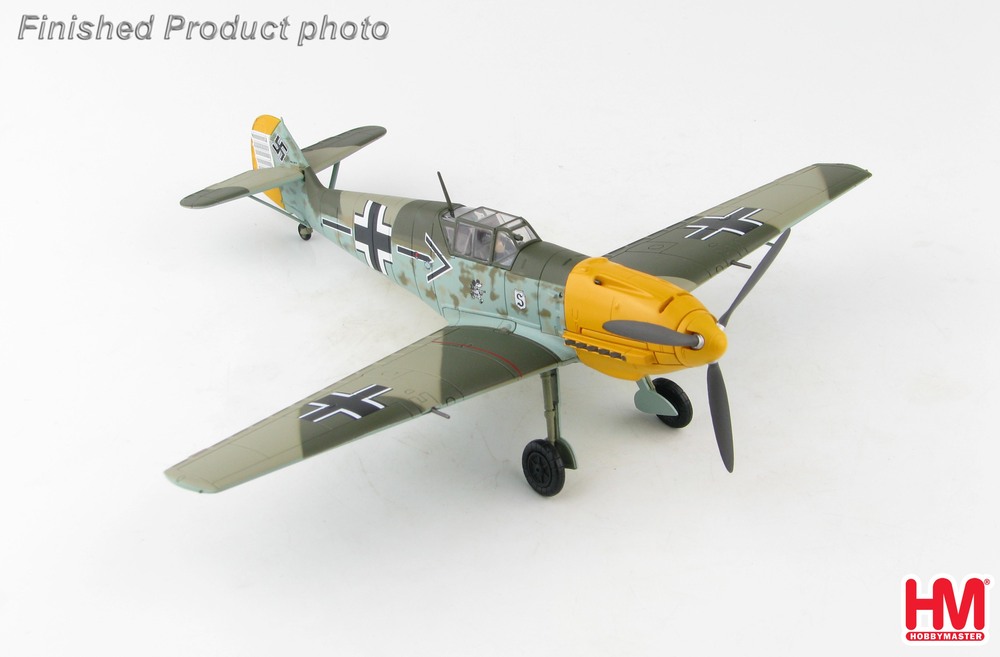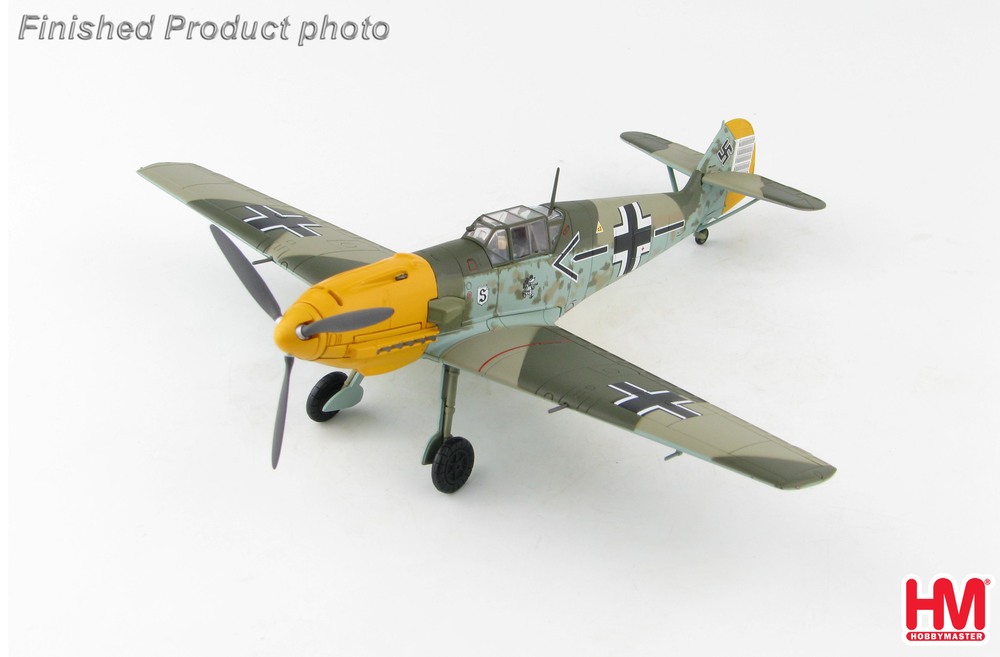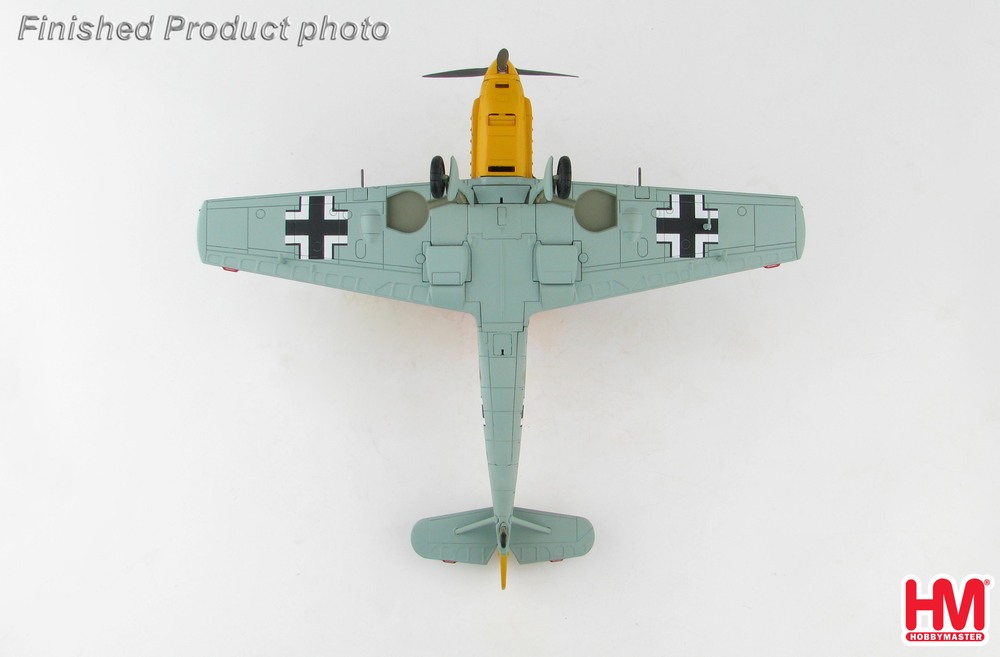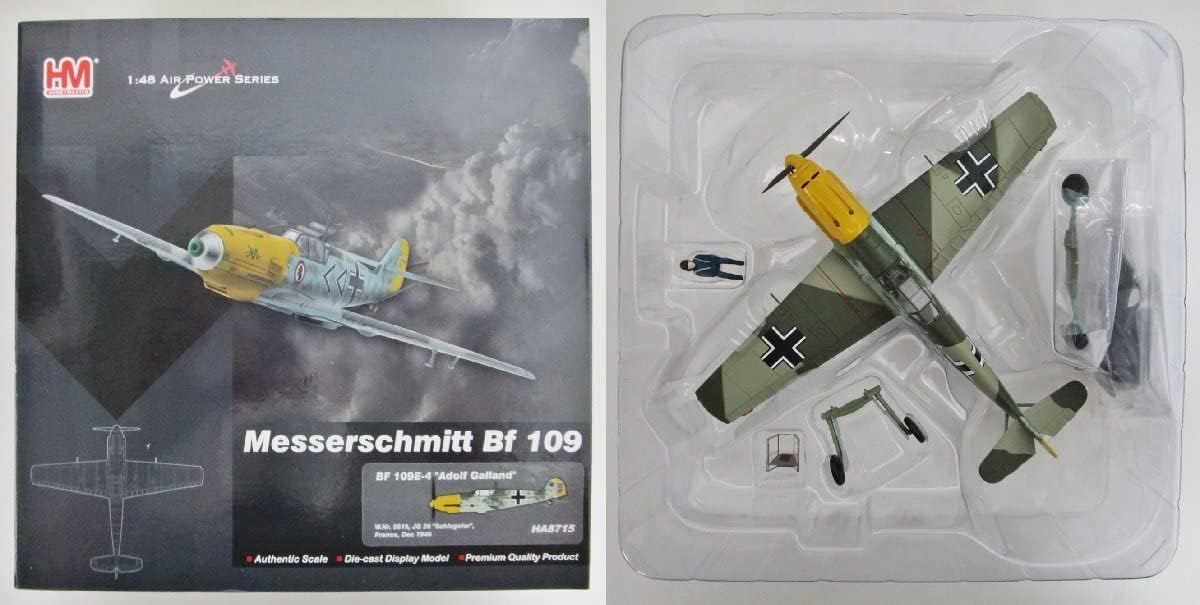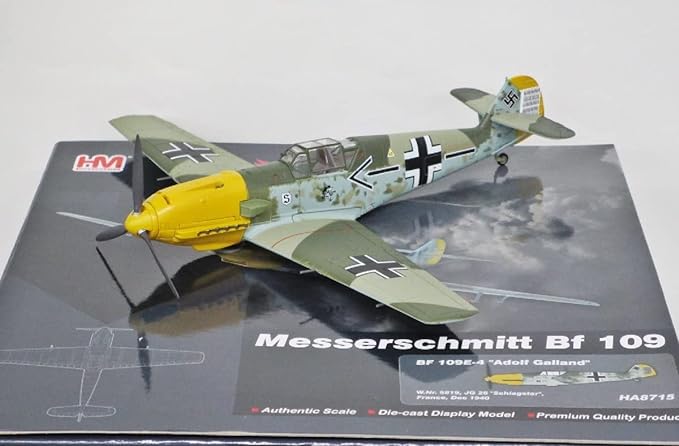Messerschmitt Bf 109E – JG 26 Schlageter, Luftwaffe, Adolf Galland, France, December 1940 1/48
Add to compareOut of stock
£124.99
Out of stock
Hobby Master 1/48 scale HA8715: Messerschmitt Bf 109E of JG 26 Schlageter, Luftwaffe, Adolf Galland, France, December 1940. Production run of 850 models.
Length 7.5 inches Wingspan 8.25 inches
JG26 was officially called Jagdgeschwader Schlageter, named after German pilot Albert Leo Schlageter who in 1923 attacked a train leaving Germany for France with coal the Germans couldn’t have because of the Versailles Treaty. Allied flyers referred to JG26 as The Abbeville Kids or The Abbeville Boys since they were stationed at Abbeville from December 1940 until February 1941. In August 1940 Major Adolf Galland was given command of JG26 and by the end of 1940 Galland’s Bf-109E wore 58 victory markings and a total of 104 by the end of WW2.
The first German mass produced 109 fighter was the Messerschmitt Bf 109E, which is often mistakenly referred to as the Me 109. The Bf is the designator for the Bayerische Flugzeugwerke (BFW) (Bavarian Aircraft Works) that produced the original aircraft. In 1938 Messerschmitt took over BFW but throughout WWII German handbooks and documents referred to the aircraft as the Bf 109. By the end of 1939 the Bf 109E (Emil) had replaced all other 109 variants and equipped 13 Gruppens with 40 aircraft each. The Bf 109 was the main Luftwaffe single-engine fighter aircraft until the Fw-190 came along.
The Messerschmitt Bf 109 is one of the few fighters ever to be developed from a light-plane design. Willy Messerschmitt’s angular little fighter was built in greater numbers than any other fighter plane, the total reaching 33,000.
The Messerschmitt Bf 109 also shot down more Allied planes than any other aircraft, and stayed in service longer than most, having entered combat in the Spanish Civil War (1936-39), fighting through World War II, and then going to war again in 1947, this time for the newly emerging state of Israel.
The great success and longevity of the Messerschmitt Bf 109 can be attributed to the simple directness of its design. In 1934, Messerschmitt engineers sought to place the biggest possible engine in the smallest possible airframe, and make that airframe easy to produce and repair. They succeeded admirably on all counts.
The first flight, in September 1935, was made with an imported Rolls-Royce Kestrel engine of 695 horsepower. Over the years, more than 100 variants of the basic design were created, including modifications introduced on Spanish and Czech production lines after the war. Larger and larger engines were installed, along with hundreds of pounds of additional equipment, and the tough little airframe took it. Examples from the final German operational version, the Bf 109K series, had a 2,000-horsepower engine and a top speed of 450 miles per hour; truly astonishing for a design begun in 1934. A little known fact is that this was the first aircraft to incorporate a slanted back pilots seat, which helped to reduce g forces in combat.
Throughout its career, the Bf 109 was pitted against new and powerful adversaries, notably upgraded British Spitfires and the North American P-51 Mustang. In the hands of a capable pilot, the Bf 109 inevitably held its own. Notoriously difficult to take off and land, and restricted to a 3 bladed propeller, the Messerschmitt nevertheless remained a formidable adversary until the last day of the war.
| Weight | 1.2 kg |
|---|






